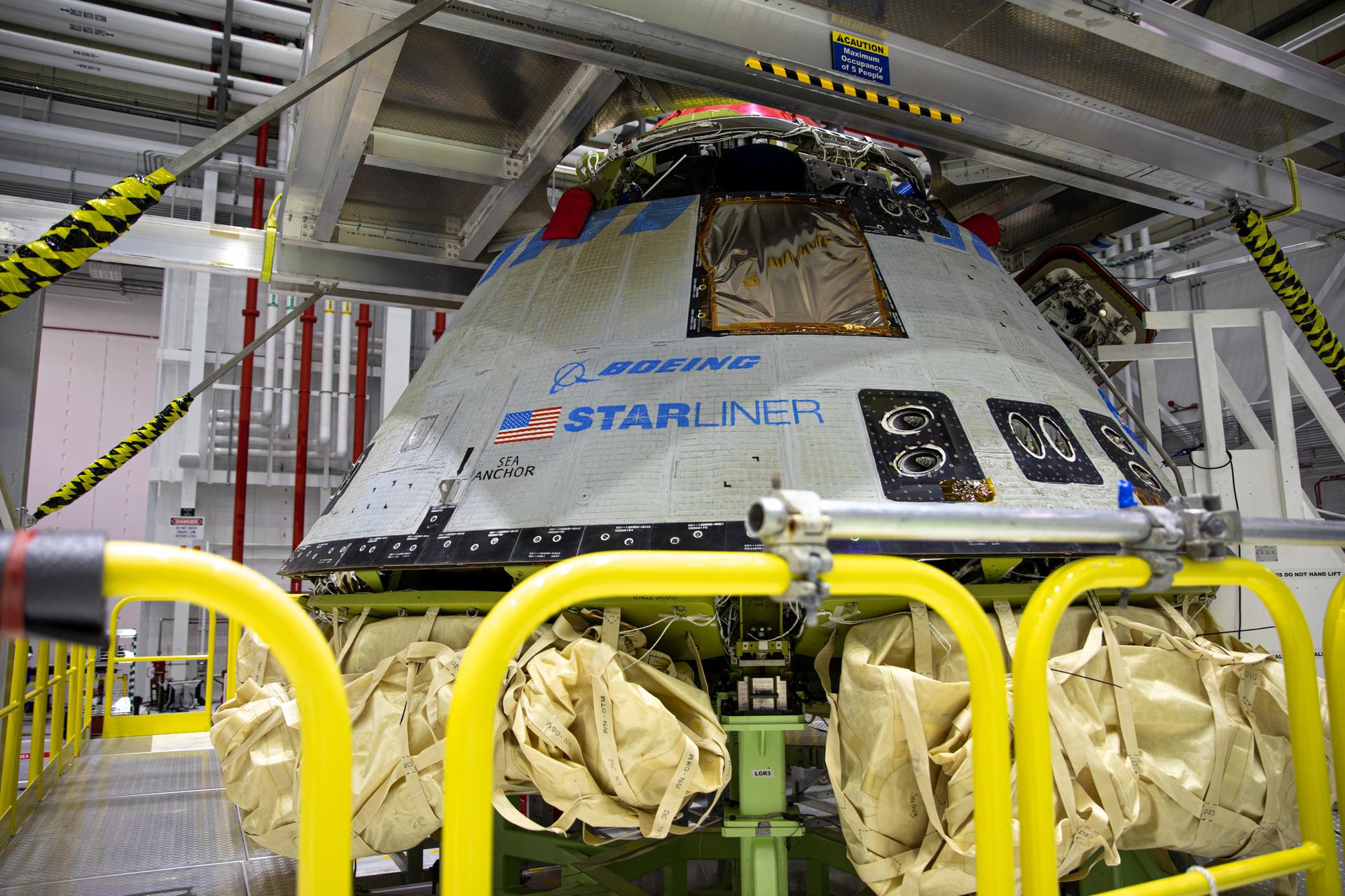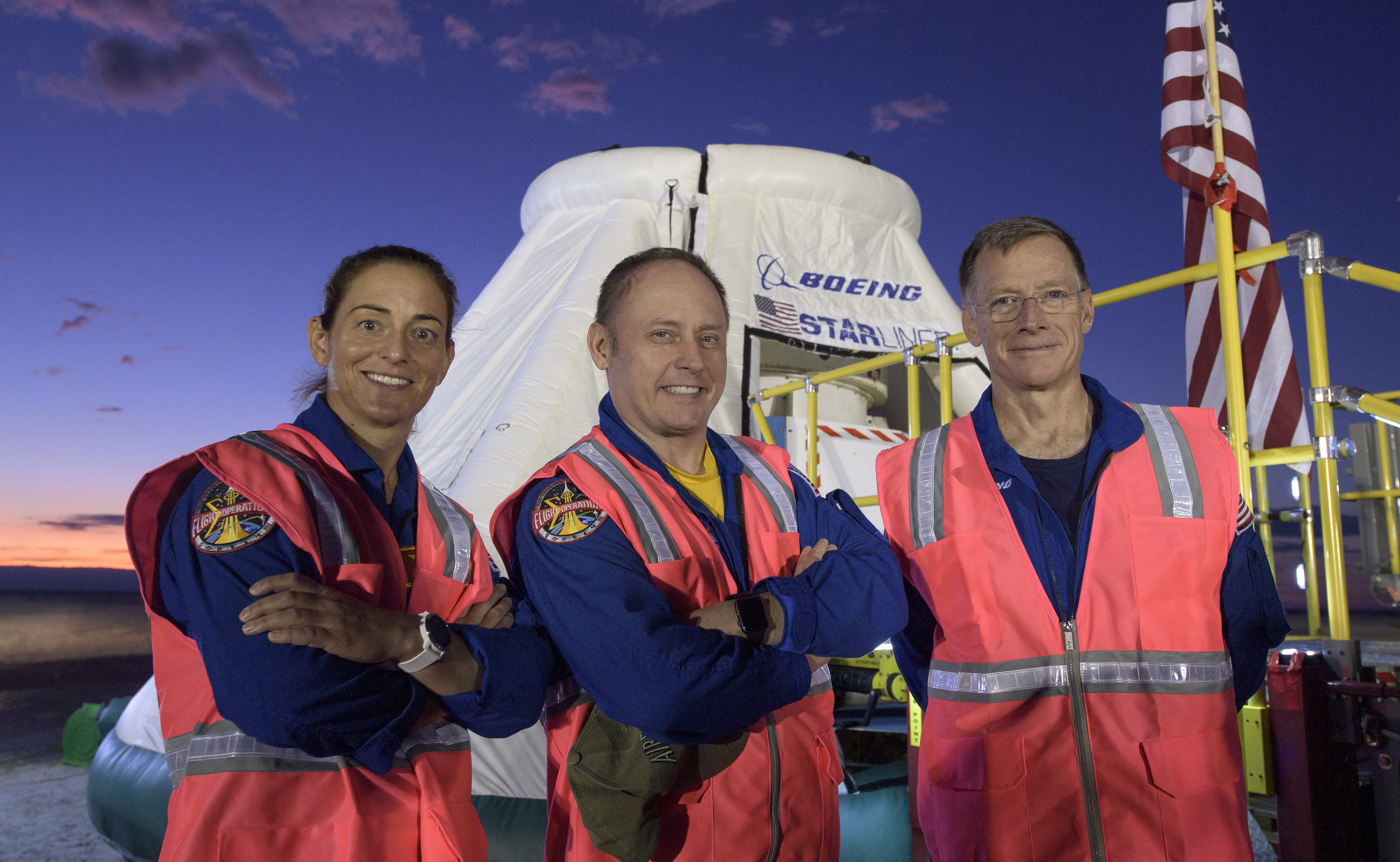Boeing's Starliner could launch to the space station in December
Boeing is giving the Orbital Flight Test mission another shot before launching astronauts to the International Space Station.

Boeing is now planning to launch the second uncrewed test flight of its CST-100 Starliner spacecraft no earlier than December, the company announced Friday (Aug. 28).
The mission, called Orbital Flight Test 2 (OFT-2), will be Boeing's second attempt at launching its new astronaut taxi to the International Space Station, following a partial failure that prevented the Starliner spacecraft from reaching the station during the OFT-1 mission in December 2019.
Once the company has demonstrated that the new space vehicle can safely ferry astronauts to and from the space station, it will be able to start launching astronauts to the orbiting lab as early as June 2021, NASA officials said in a statement.
Related: Boeing's 1st Starliner flight test in photos
Starliner's first crewed mission, called Crew Flight Test, will send NASA astronauts Mike Fincke and Nicole Mann and Boeing astronaut Chris Ferguson to the space station. If that crewed test flight is successful, Boeing could start flying operational crewed missions as soon as December 2021, NASA added in the statement.
Boeing's first operational crewed flight, called Starliner 1, will bring NASA astronauts Jeanette Epps, Sunita Williams and Josh Cassada to the space station. All Starliner missions will launch from Cape Canaveral Air Force Station in Florida on a United Launch Alliance Atlas V rocket.
Boeing and NASA originally planned to fly Starliner's Crew Flight Test mission in mid-2020, but the mission was delayed after Boeing decided to redo the Orbital Flight Test. During its first test flight in December 2019, a series of technical problems left the Starliner spacecraft stranded in the wrong orbit and unable to reach the space station. So, instead of docking with the orbiting lab, Starliner returned to Earth after just two days in space.
Get the Space.com Newsletter
Breaking space news, the latest updates on rocket launches, skywatching events and more!
Following the problematic test flight, NASA and Boeing formed an independent review team to investigate the cause of OFT-1's partial failure. That investigation, which wrapped up in July, found that two major software errors and a temporary drop in communications during the test flight were primarily responsible for the partial failure, and the investigators identified 80 "corrective actions" for Boeing to address before the next Starliner mission. Boeing has so far tackled almost 75% of those tasks, NASA said in the statement.

While the Starliner spacecraft is designed to be reused, Boeing will use a brand new Starliner for the OFT-2 mission. The new capsule will provide "additional on-orbit experience for the operational teams prior to flying missions with astronauts," NASA said in the statement. The OFT-1 Starliner capsule, nicknamed "Calypso," will fly again on the Starliner 1 mission.
Boeing has spent this summer assembling the new Starliner capsule for OFT-2 and is currently adding a few finishing touches before the spacecraft is ready to fly. Meanwhile, Boeing's software team in Houston is wrapping up the modifications to Starliner's flight codes that were recommended by the independent review team. The software team is currently preparing to conduct a fully integrated, end-to-end rehearsal test with Starliner and the Atlas V rocket — a test that Boeing was criticized for skipping before the problematic OFT-1 mission.
While Boeing is still working to demonstrate that its new astronaut taxi can safely transport crews to and from the space station, SpaceX is gearing up for its first operational Crew Dragon mission to the station, Crew-1, following the company's successful Demo-2 mission, which sent NASA astronauts Bob Behnken and Doug Hurley to the space station in May.
After the space shuttle program ended in 2011, NASA contracted both SpaceX and Boeing to launch astronauts from U.S. soil, thereby reducing NASA's dependence on Russia's Soyuz spacecraft to get astronauts to the space station.
Email Hanneke Weitering at hweitering@space.com or follow her on Twitter @hannekescience. Follow us on Twitter @Spacedotcom and on Facebook.
Join our Space Forums to keep talking space on the latest missions, night sky and more! And if you have a news tip, correction or comment, let us know at: community@space.com.

Hanneke Weitering is a multimedia journalist in the Pacific Northwest reporting on the future of aviation at FutureFlight.aero and Aviation International News and was previously the Editor for Spaceflight and Astronomy news here at Space.com. As an editor with over 10 years of experience in science journalism she has previously written for Scholastic Classroom Magazines, MedPage Today and The Joint Institute for Computational Sciences at Oak Ridge National Laboratory. After studying physics at the University of Tennessee in her hometown of Knoxville, she earned her graduate degree in Science, Health and Environmental Reporting (SHERP) from New York University. Hanneke joined the Space.com team in 2016 as a staff writer and producer, covering topics including spaceflight and astronomy. She currently lives in Seattle, home of the Space Needle, with her cat and two snakes. In her spare time, Hanneke enjoys exploring the Rocky Mountains, basking in nature and looking for dark skies to gaze at the cosmos.
-
DreamDragon Godspeed! It better work this time around. They have been awarded a half billion dollars, i think, of taxpayer money to get it working right.Reply









